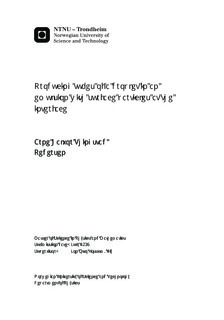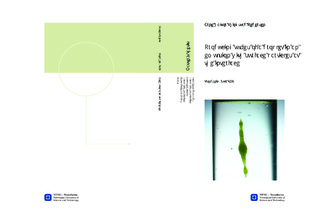| dc.description.abstract | The aim of the work done in connection to this thesis was to find different methods with which long tubes of one liquid suspended in another can be made (an emulsion). Various liquids (silicone oil, castor oil, diethyl-phtalate, water, and a mixture of water and glycerol) as well as different types of surface particles were used in the hope of making tubes. When good results were obtained, the length l was measured and the aspect ratio a=l/d (l=the length of the tube, d=the diameter of the tube) calculated, so that it was possible to compare the results. Eight different methods were applied, through which different factors influencing the lengths and ratios of the tubes were discovered.After withdrawing some of the fluid from a droplet, which was then covered by buckles of particles, an electric field could be applied onto the system causing a deformation of the droplet or pipette tips could be moved manually alongside the droplet, allowing the surrounding fluid to deform it. At high field strengths, Quincke rotations occurred which made the process unpredictable. Nevertheless, satisfactory results were obtained. A third method was used, in which two droplets were coalesced into one and then deformed by an electric field or pipette tips, without any further success.The method yielding the best results in this thesis was the one including an object, of a known diameter and volume, sinking through a particle layer situated at the interface of two liquids which are placed directly on top of each other. Factors that were found to be crucial to obtaining the longest tubes were the diameter of the surface particles, the friction between the object and the fluids and particles, and the relationship between the horizontal cross-sectional areas of the object and the container.Four other methods were tried as well. Objects of different materials were used to pull at a particle layer situated at the interface of two liquids, yielding some interesting results. Also, a pipette was moved vertically upwards whilst releasing a liquid into another liquid, with a couple of interesting consequences. Another method included the ejection of a jet of a liquid containing particles from a pipette into another liquid, without any further success. In the last method, the idea was to pour a liquid onto another, the latter covered by a layer of particles at its surface. This gave some discouraging results. In future experiments with the last four methods, the densities of liquids in an emulsion should be matched, as long as the properties of the system do not change notably, and the surface tensions of the liquids should be paid closer attention to. Furthermore, the concentration and the type of particles are important. In the method of pulling at a particle layer, the material, and hence the friction caused, of the pulling object might matter. | nb_NO |

